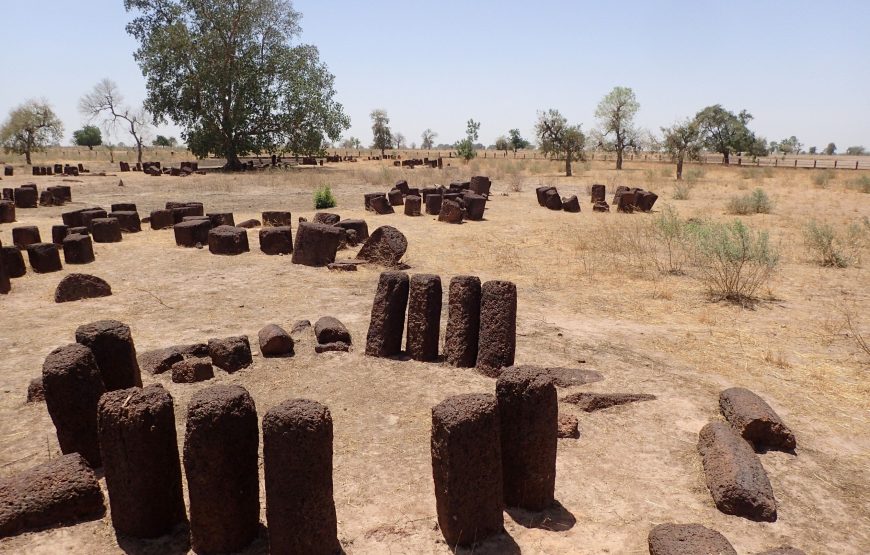Senegambia’s Stone Circles
West Africa lacks monumental remains comparable to those found in Europe or other places, such as the Mayan structures. Only one exception to this exists in West Africa: the megalithic circles found on the border between Senegal and Gambia. The enigma of who were the first inhabitants of these sites near the Senegambia rivers and what they hold so sacred about our ancestral origins still remains.
In 2006, the UNESCO World Heritage List added the Stone Circles. This extraordinary grouping of more than 1000 monuments consists of four large groups of megalithic circles that stretch over a 100 km wide strip, running 350 km along the Gambia River. The groups include Sine Ngayène, Wanar from Senegal, and Wassu, Kerbatch in the Gambia, with 93 circles and many tumuli, funeral mounds.
Archaeological excavations have revealed that the carefully cut laterite stone circles and their associated burial mounds reflect a prosperous, enduring, and highly organized society that existed between the 3rd century BC and the 16th century AD. The craftsmen expertly cut the stones forming the circles into almost identical columns, either cylindrical or polygonal in section, with an average height of 2 meters and weighing up to 7 tons. Each circle contains between 8 and 14 standing stones with a diameter of 4 to 6 meters, all located near burial mounds.
West Africa’s megalithic zone seems to be the world’s most extensive and complex known complex based on its size and similarity. Cheikh Anta Diop, a Senegalese Egyptologist, and scientist, explains that Tumuli were sand mounds or burials of significant personalities who were interred with their pets, food, jewelry, and sometimes their possessions. These people had also discovered the secret of embalming bodies.
The most remarkable sight in the megalithic area is that of Sine Ngayène in the Kaolack region of Senegal, which has 52 circles for 1,200 megalithic stones and around a hundred tumuli. Some sites include both types of monuments, stone circles, and burial mounds. Tumuli are still located outside the megalithic circles.
Archaeologists found many bodies, mostly skeletons but also terracotta pottery, weapons, and ornaments, during excavations in megalithic circles.
Cheikh Anta Diop would indeed have cited the passage of the Serer, this ethnic group has built the Egyptian Pyramids and Temples.
Article by Abou Pouye, Travel Expert at Continent Tours




Comment (0)